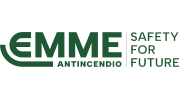|
Why are emergency showers or eyewash stations important?
The first 10 to 15 seconds after exposure to a hazardous substance, especially a corrosive substance, are critical. Delaying treatment, even for a few seconds, may cause serious injury.
Emergency showers and eyewash stations provide an immediately decontamination. They allow workers to flush away dangerous substances that can cause injury. Accidental chemical exposures can still occur even with good engineering controls and safety precautions. Emergency showers and eyewash stations are necessary to minimize the effects of accident exposure to chemicals. Emergency showers can also be used in extinguishing clothing fires or for flushing off contaminated clothing.
The standards define "flushing fluid" any type of drinking water, preserved water, saline solution or other medically solutions.
For emergency showers and eyewash stations to be effective, recommends that the affected body part must be flushed immediately and thoroughly for at least 15-20 minutes (if the nature of the contaminant is not known) using a large supply of clean fluid under low pressure. The flushing or rinsing time can be modified if the identity and properties of the chemical are known. For example:
- a minimum of 5 minutes flushing time is recommended for mildly irritating chemicals
- at least 20 minutes for moderate-to-severe irritants
- 20 minutes for non-penetrating corrosives
- at least 60 minutes for penetrating corrosives
Water does not neutralize contaminants, it only dilutes and washes them away. This is why large amounts of water are needed.
Penetrating corrosives, such as most alkalies, hydrofluoric acid and phenol, enter the skin or eyes deeplly, these require longer water flushing (a minimum of 60 minutes) than non-penetrating corrosives (a minimum of 20 minutes). In all cases, if irritation persists, repeat the flushing procedure. It is important to get medical attention as soon as possible after first aid has been given.
Eyewash stations are only designed to flush the eye and face area. There are combination units available that contain both features: a shower and an eyewash. In some jobs or work areas, the effect of a dangerous substance may be limited to the worker's face and eyes. Therefore, an eyewash station may be the appropriate device for worker protection. In other situations the worker may risk part or full body contact with dangerous substances so In this case, an emergency shower may be more appropriate. Prevalently, a combination unit is the most protective device and should be used whereever is possible.
EMERGENCY SHOWER
The emergency shower should deliver a pattern of water with a diameter of at least 50.8cm. This diameter ensures that the water will come into contact with the entire body. The shower should also be designed so that it can be activated in less than 1 second, and it remains operational without the operator's hand on the valve.
EYEWASH AND EYE/FACE WASH STATIONS
Eyewash stations should be designed to deliver fluid to both eyes simultaneously at a volume of not less than 1.5 litres/minuts for 15 minutes. As for the shower, the unit should also be designed so that it can be activated in less than 1 second, and it remains operational without the operator's hand on the valve.
Other recommendations include that the emergency shower or eyewash station should:
- be located as close to the potentially dangerous material as possible.
- be on an unobstructed path between the workstation and the hazard. (Workers should not have to pass through doorways or other obstacles to reach them.)
- be located where workers can easily see them
- be located near an emergency exit every time that is possible
- not come into contact with any electrical equipment
The standards recommends that the water should be "tepid" and defines this temperature as being between 16-38°C. Temperatures higher than 38°C are harmful to the eyes and can amplify chemical interaction with the skin and the eyes.
Which are examples of areas that may require this equipment?
 Work areas and operations that may require these devices include: Work areas and operations that may require these devices include:
- battery charging areas,
- laboratories,
- spraying operations,
- high dust areas,
- dipping operations, and
- hazardous substances dispensing areas.
|


